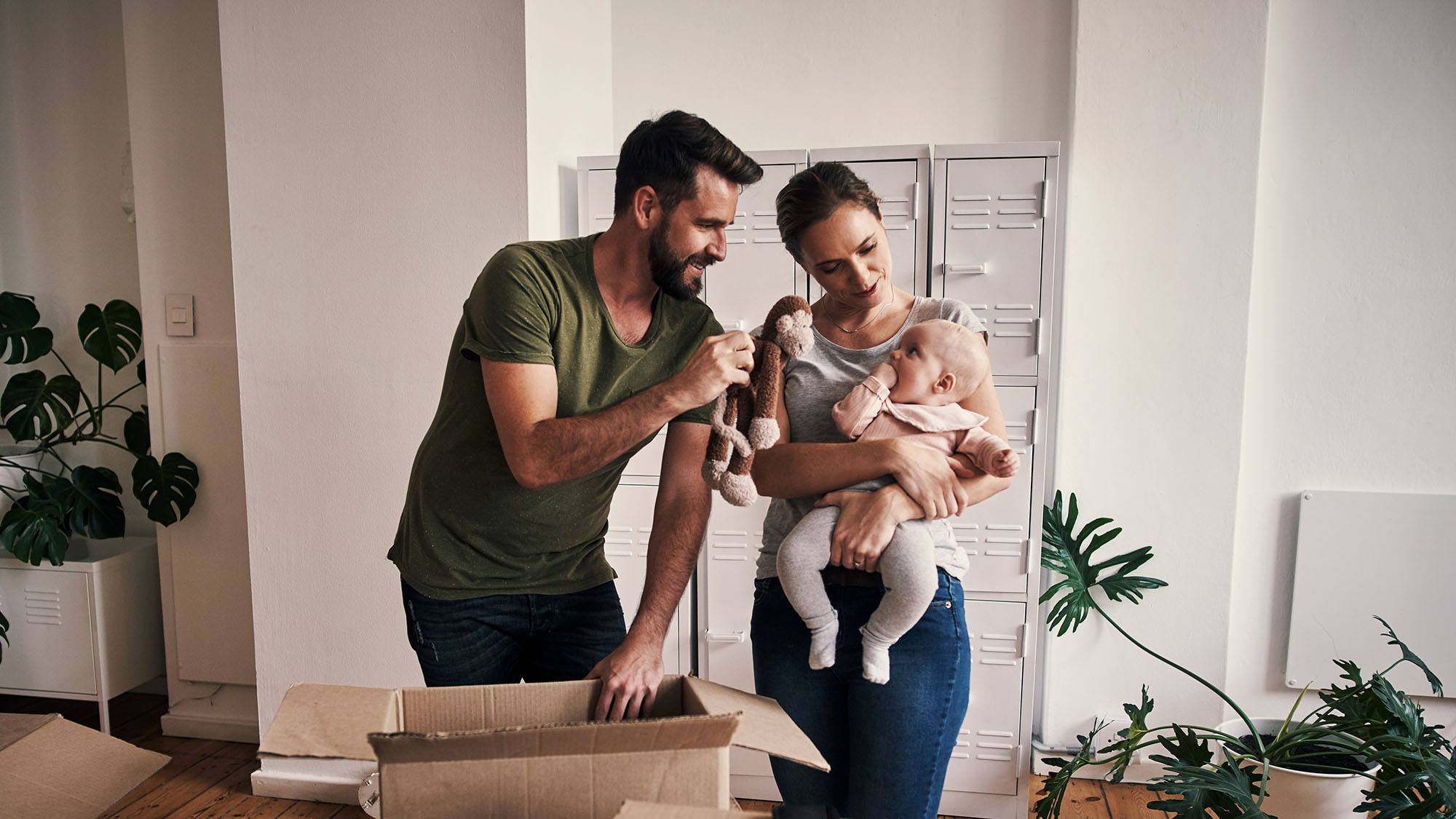
For many people, shared ownership can offer a stepping-stone onto the property ladder but is it right for you? Here, we look at:
How does shared ownership work?
Is shared ownership leasehold or freehold?
Who can apply for shared ownership?
What are the features of shared ownership?
A shared ownership scheme could enable you to buy a proportion of your home, usually through a housing association. You then pay rent on the rest. For example, if you buy a 50% share of a property valued at £100,000, you then pay rent on the remaining £50,000.
Shared ownership gives you the flexibility to increase the share of the property that you own.
You usually start by buying 10% to 25% of the property. Most providers allow you to buy up to 100% of the property over time (known as staircasing), however, some don’t allow this.
Please note, that different rules apply in Northern Ireland, Scotland, and Wales.
Most shared ownership houses are leasehold properties. You’d own a share of the home, and the rest (including the land) typically belongs to the housing association or a similar provider.
If they’re happy for you to buy the leasehold, your home would then become freehold. However, they’re under no obligation to sell it, which means they have the right to refuse.
Your appointed shared ownership solicitor and housing association should be able to give you information on what this means for your particular property.
You may be eligible for shared ownership if:
You also need to be either:
Other criteria may apply if you’re looking to buy certain shared ownership homes.
Visit GOV.UK for more information and to check if you’re eligible.
It’s important to understand some of the pros and cons of a shared ownership mortgage to make sure the scheme is right for you.
Buying a shared ownership home requires a much smaller deposit because it’ll be based on the share value rather than the full value of the property.
With this reduced financial barrier, getting onto the housing market becomes more accessible, especially if you have a lower income.
Explore: How to save for a house deposit
With shared ownership, you have the opportunity to increase your share gradually if you want to – at a timeframe you can afford. This is called staircasing, which could potentially allow you achieve 100% home ownership.
If the value of your property goes up, so would the value of your share. However, there are no guarantees – house prices can go down as well as up. The share cost will also increase – something to consider if you want to buy a bigger share of your home.
Shared ownership is a part-buy, part-rent scheme, so you’d still need to make monthly rental payments if you don’t fully own the property.
Along with paying rent on the proportion of your home, you also have the associated costs of owning a leasehold property. These include ground rent and service charges to cover the maintenance of communal areas. However, unlike a tenant, you’ll have to fund any repairs needed to your home yourself.
Your shared ownership agreement should tell you who manages different types of repair work.
With staircasing, it’s not just the money to cover buying the share you need to worry about. There are other costs to consider, including legal and survey fees and Stamp Duty (depending on the value of the shares you’re buying).
Compared to homes on the open market, shared ownership properties are less widely available. You may have to compromise on location or property type if you want a shared ownership mortgage.
Selling a shared ownership property can be trickier than selling a home under other types of ownership.
You must let the property owner (for example, the housing association) know you want to sell. They’ll be given a period in which to find a buyer. If they can’t secure a buyer within the nomination period, you can sell your share on the open market (through an estate agent, for example).
You may be able to sell it on the open market straight away but check the terms of your lease. If it has a ‘designated protected area – mandatory buyback’ lease, the property owner will either buy the home or arrange for someone else to buy it.
The shared ownership scheme is a UK government initiative and could change.
For more information, visit GOV.UK: Shared ownership homes.
This article was last updated on: 17/11/2025, 04:05